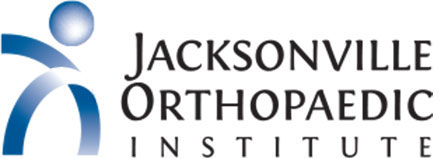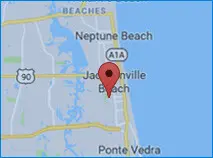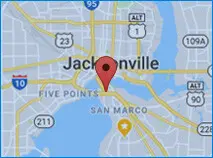The Dying Hip
By Gary S. Kitay, M.D. and Bruce Steinberg, M.D.
Rejuvenation of the Dying Hip: The Fibular Transfer Procedure
Arthritis of the hip is a common problem that can lead to pain with every step taken. It involves the degeneration of the smooth cartilage lining that makes up the joint surface. The joint gradually deteriorates until the normally smooth gliding surface is replaced with painful spurs and “bone on bone” contact. The hip joint itself is similar to a ball and socket with the thigh bone, or femoral head, making up the ball and the socket’s pelvis. Injuries to either of these structures can lead to the development and progression of arthritis. There can be many causes of arthritis of the hip. These include fractures, congenital disabilities, and avascular necrosis.

hip avascular necrosis
Avascular Necrosis Incidence
Avascular necrosis, also known as the dying hip, is the cause of about 10% of severe hip arthritis cases seen in this country. A disruption of the blood supply causes it into the femoral head. This lack of blood supply eventually leads to the dead bone within the ball of the hip joint. This then progresses to flattening the head from its normal round shape. The uneven joint surface, or incongruity, leads to progressive degeneration until the hip is fully arthritic. There are cases where the body spontaneously recovers, and the blood supply will restore without the progression of this disease. However, unfortunately, in the majority of cases, the condition does progress when left untreated.
Diagnosis of Avascular Necrosis
Avascular necrosis is a more frequent cause of hip arthritis below the age of 50. In most cases, there is a history of either heavy steroid or alcohol use. The condition is diagnosed by examination with radiologic studies, including X-rays and an MRI scan. The X-rays reveal the hip joint architecture and can divide the process into the pre-collapse and post-collapse stages.
Treatment for The Dying Hip
The femoral head’s treatment options, which have lost its blood supply and is essentially “dying” are multiple. Observation is an option. However, this is a difficult choice as the condition will likely progress and result in a painful arthritic hip joint. Drilling a hole into the femoral head or decompression can be effective in certain cases to diminish hip pain. Total hip arthroplasty or replacement may be necessary in more serious disease stages.
Another treatment of avascular necrosis is to reverse the avascular process. A more recent development in orthopedic and microsurgery has been the introduction (about 20 years ago) of an operation that attempts to bring a new blood source to the once bloodless and dying portion of the hip. This procedure, called free vascularized fibular grafting, involves removing a portion of the fibular bone from the same leg as the involved hip and transferring it into the diseased hip bone.
The fibula is the smaller bone in the lower leg, and a portion of it can be transferred usually without any loss of function. Its blood vessels are then connected to non-essential blood vessels around the hip, hence restoring blood supply to the hip joint’s diseased region. The entire process then involves decompression of the abnormal bone by drilling a hole into the ball of the hip, removal of much of the dead bone from within this region, placement of the normal fibular bone, which acts as structural support, and then reestablishing blood supply to provide nutrients once again to the ball of the hip.
The Fibular Transfer Procedure
The fibular transfer procedure offers the best chance of arresting and even reversing the process of bone death in the hip joint, thus avoiding a hip replacement. The advantage of this is that the patient’s native hip joint is usually preserved, offering a lifetime of near restriction-free and normal use. In contrast, hip replacement surgery, particularly in the younger patient, can wear out over time, necessitating further operations to revise or replace the original hip replacement’s artificial joint. However, the free fibular transfer procedure does not lead to uniformly successful results. There are those where the arthritic process continues, and eventually, a hip replacement is the only remaining option.
The success of the operation depends on the age of the patient and the stage where the avascular necrosis disease process is found. Basically, the earlier the stage and the younger the patient, the more attractive the fibular transfer procedure is. Candidates are generally under the age of fifty years old, and the ball of the hip is in the pre-collapse stage. In these circumstances, a hip replacement may not be necessary. Upon diagnosis, patients who are in the post-collapse stage of the disease process, with flattening of the ball of the hip joint, are generally good candidates for free fibula transfer when they are less than forty years of age.
Is Fibula Transfer Surgery for You
A timely decision to proceed with fibula transfer surgery is imperative. The disease process tends to progress within twenty months and, at times, even within a thirty-day period. Following surgery, the patient a hospital stay is usually four to six days. Crutch walking without bearing any weight on the involved leg continues for six weeks, whereupon a very gradual increase in the weight placed on the operated leg occurs.
It takes a full six months to return to full activities. Avoid sports involving jarring or stop/start activities. However, sports such as swimming can be started even six weeks following the operation. A return to sedentary work can also occur about six weeks following completion of the procedure. Most patients feel a significant decrease in their hip pain about two weeks following their operation. It is not unusual to be pain-free about two months following the procedure.
Book an Appointment with The Jacksonville Orthopaedic Institute Today!
JOI Physicians continue to offer online new patient appointments. This is another option to make it more convenient to make new patient appointments with less phone hold times. Follow the link below to select your JOI MD and schedule online.
You can still call 904-JOI-2000 to make new patient JOI Physician Appointments if that is your preference.
New To JOI: You now can make and cancel follow-up appointments for your JOI Physician through the JOI Portal.
To make appointments with JOI Rehab, please call 904-858-7045.






